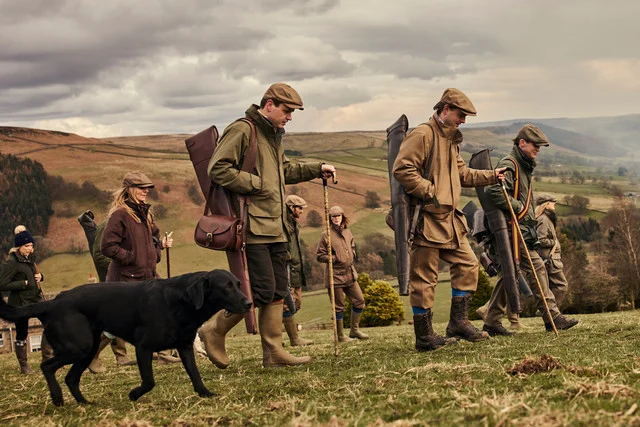Wellingtons vs Shooting boots on the shooting field
Choosing the right footwear for the shooting field very much depends on the type of shooting you are doing, with terrain, etiquette and of course personal preference all playing a part. The chances are you are spending precious time off work in the shooting field, as well as spending your hard-earned cash, and nothing can ruin a day quicker that the wrong footwear, so it’s worth spending a bit of time make the right choice.
Wellington Boots
Wellington boots, often referred to as "wellies," are iconic symbols of countryside attire. These tall, rubber boots provide excellent protection against water, mud, and muck, making them ideal for wet and boggy terrains commonly found in shooting fields. Their seamless design ensures waterproofing up to the knee, keeping the feet dry and comfortable even in the soggiest conditions. One of the primary advantages of Wellington boots is their ease of maintenance. Simply rinse off the mud and grime, and they're good to go for the next outing. Shooting Wellington boots also offer decent insulation (especially with a neoprene lined version), keeping the feet warm in chilly weather, although additional shooting socks may be necessary for extended periods outdoors in colder climates.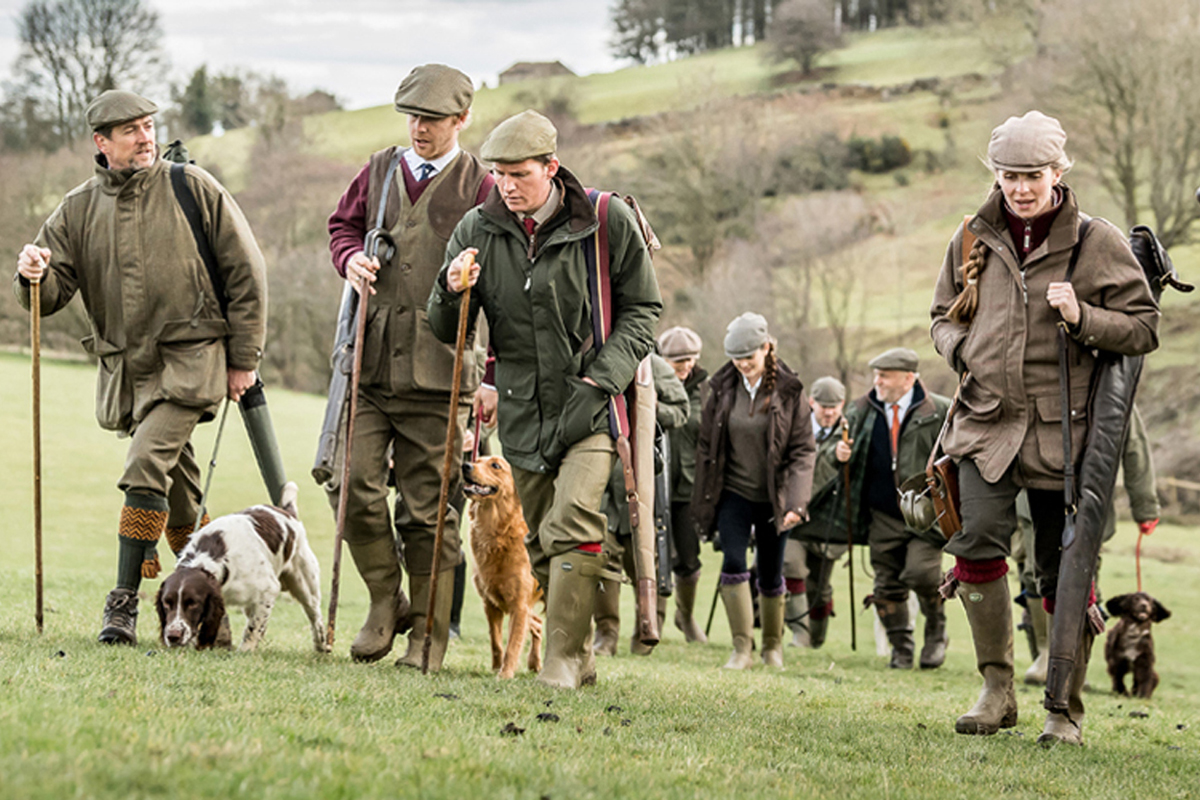
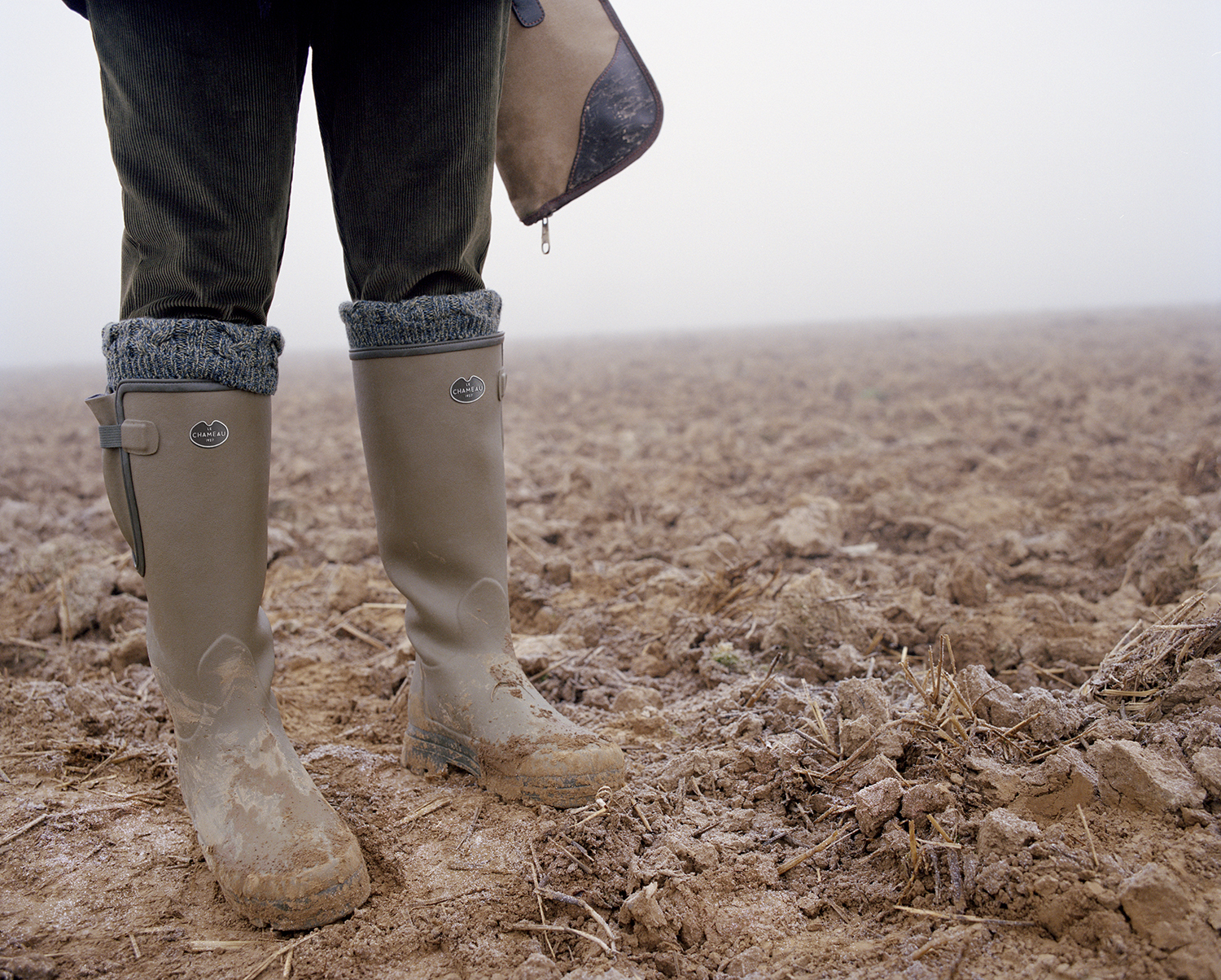
However, Wellington boots do have their limitations. Their lack of ankle support can be a drawback when traversing uneven terrain or navigating steep slopes, potentially increasing the risk of twists or sprains. Additionally, their bulkiness and weight may not be conducive to stealthy movement required for stalking game at close range.
Popular shooting Wellington boot styles include the Seeland Key-Point Neoprene Lined Wellington Boots which are durable and reliable shooting Wellington boots, and the ever-popular Le Chameau Vierzonord Neoprene Lined Boots which are a true countryside staple.
Choosing the right footwear for the shooting field very much depends on the type of shooting you are doing, with terrain, etiquette and of course personal preference all playing a part. The chances are you are spending precious time off work in the shooting field, as well as spending your hard-earned cash, and nothing can ruin a day quicker that the wrong footwear, so it’s worth spending a bit of time make the right choice.
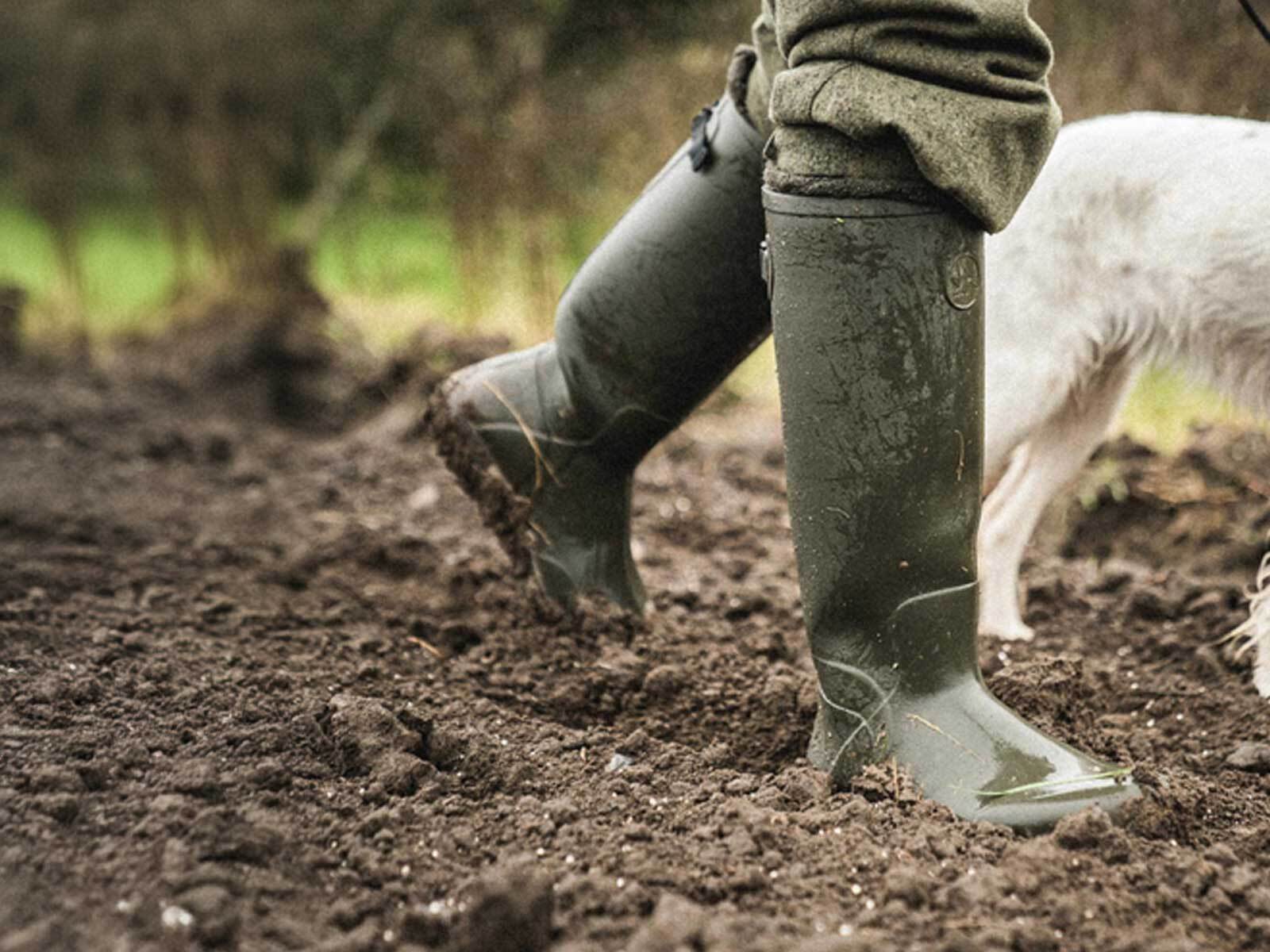
Wellington Boot Pros
- Easier to look after
- Waterproof higher up the leg
- Quicker to put on and off
Wellington Boot Cons
- Lower levels of ankle support (and consequently grip)
- Bulky and can be heavy
- Rubber isn’t breathable
Shooting Boots
Shooting boots, and stalking boots are essentially interchangeable terms for a lace up boot. They are generally differentiated from a walking boot by coming up to the mid or upper calf (whereas a walking boot generally stops at the ankle).
In contrast to the all-weather functionality of Wellington boots, shooting boots are tailored for the shooter who values agility, support, and stealth. Crafted from lightweight yet durable materials such as leather or synthetic fabrics, stalking boots prioritize mobility and flexibility without compromising on protection.
Shooting boots typically feature a lower profile and a more contoured fit compared to shooting Wellington boots, offering superior ankle support and stability. This makes them well-suited for traversing rugged terrain, navigating dense undergrowth, and maintaining balance on uneven surfaces - a crucial advantage for hunters seeking elusive prey in challenging environments.
Furthermore, shooting boots excel in providing traction and grip, thanks to their specialized outsoles designed to perform on various surfaces, including slippery rocks and muddy trails. This traction is essential for maintaining sure footing while moving stealthily through the countryside, minimising the risk of slips or falls that could alert game to your presence.
Another noteworthy feature of stalking boots is their breathability. Many models incorporate moisture-wicking linings and breathable membranes that help regulate temperature and prevent overheating, ensuring comfort during extended periods of activity in mild to warm weather conditions.
However, stalking boots may not offer the same level of waterproofing as Wellington boots, especially in extremely wet or boggy terrain. While some models are water-proof, prolonged exposure to moisture can compromise their effectiveness, leading to dampness and discomfort.
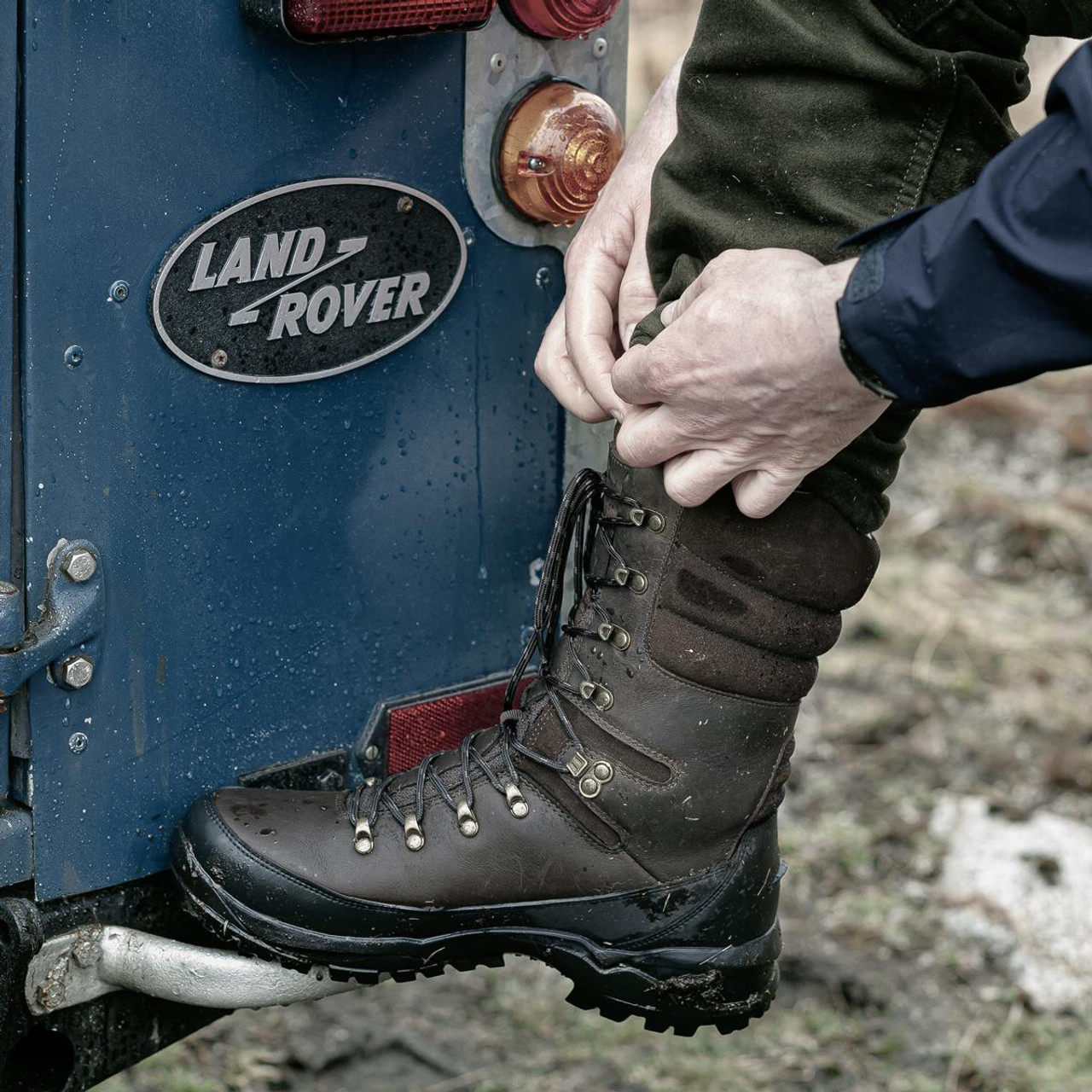 >
>
Harkila offer an excellent range of shooting boots with styles for different types of shooting and hunting. The Harkila Reidmar Mid 2.0 GTX Boots are a versatile choice, ideal for tough terrains, and the Harkila Pro Hunter Ridge 2.0 GTX Boots are tall stalking boots that offer exemplary protection on uneven, boggy ground. Likewise, Le Chameau have a strong reputation amongst the shooting community for making excellent shooting boots. The Le Chameau Mouflon 2.0 Extreme Boots are their standout stalking boots and are available in 10” and 12” heights to suit your preference and type of hunting conditions.
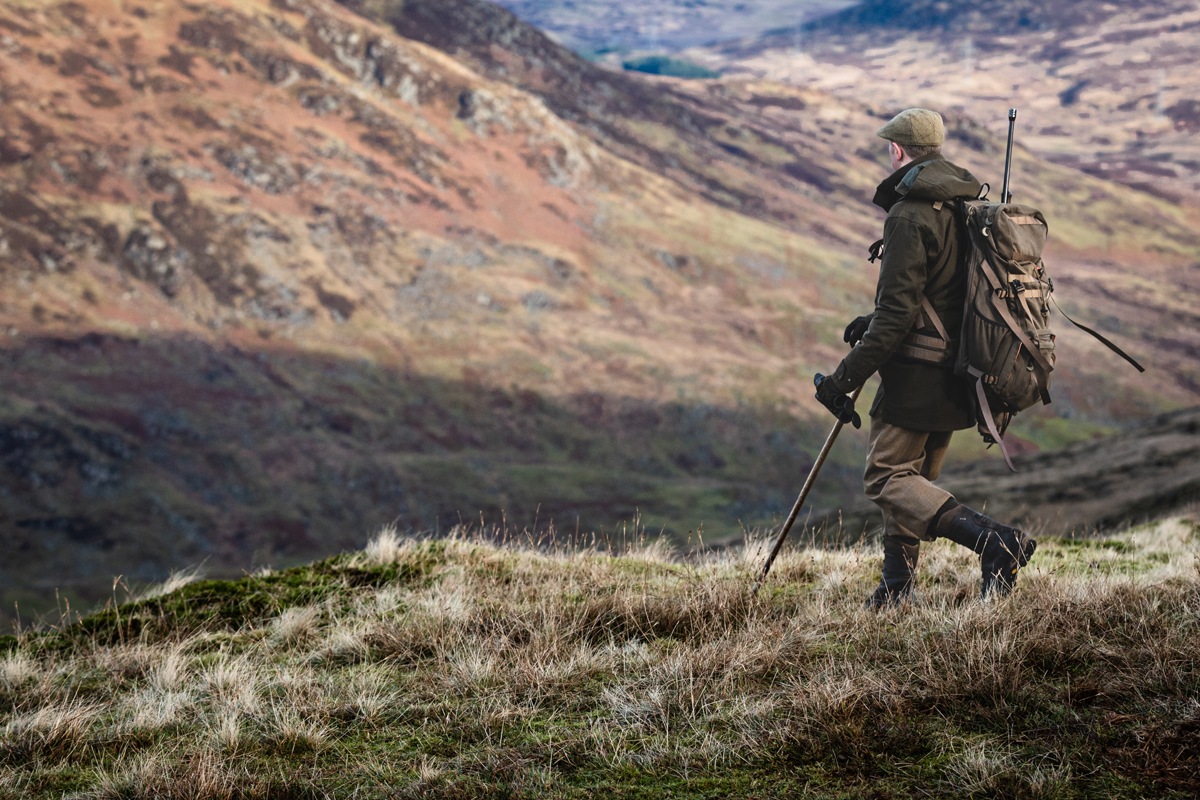
Shooting Boots Pros
- Greater ankle support
- Greater grip
- Generally breathable
Shooting Boots Cons
- Harder work to clean and maintain
- Take longer to get on and off
Factors to consider when making your decision
Shooting types: For stalking, which often involves walking greater distances over rough terrain shooting boots tend to be favoured by experienced shooters. Whereas for driven shoots, which often take place on lower lying, more open ground, shooting wellies are more common. There are no rules on this and the terrain is probably a more important factor than the shooting type.
Terrain: On lower lying ground, wetlands, and open farmland, wellies are generally the more popular option. You’re better projected against deep mud and puddles, and not so likely to need the ankle support provided by the shooting boots. On rougher ground, uplands and areas with heather and gorse, lace up shooting boots are generally preferred. The ankle support of a lace up boot is more important in these conditions and the durability of construction in an ankle boot can generally outperform the less rugged rubber construction of a wellington boot.
Dress Code and Etiquette: Depending on the type of shooting you are doing, it’s important to look the part, especially on smarter driven game days. Traditionally wellington boots would be more normal amongst the guns on a driven day and shooting boots more normal for a day’s stalking. Increasingly, however, it is more common to see shooting boots on driven game shoot and I don’t feel that they would look at all out of place. Beaters and keepers are commonly seen in shooting boots, which, given they often need to work through tougher terrain, is perhaps not a surprising choice.
Comfort: This really is the key factor. You may be out in the boots for a full day without taking them off once, so they need to fit correctly and be well worn in. They also need to be in a good state of repair (walking miles with wet feed is no fun!).
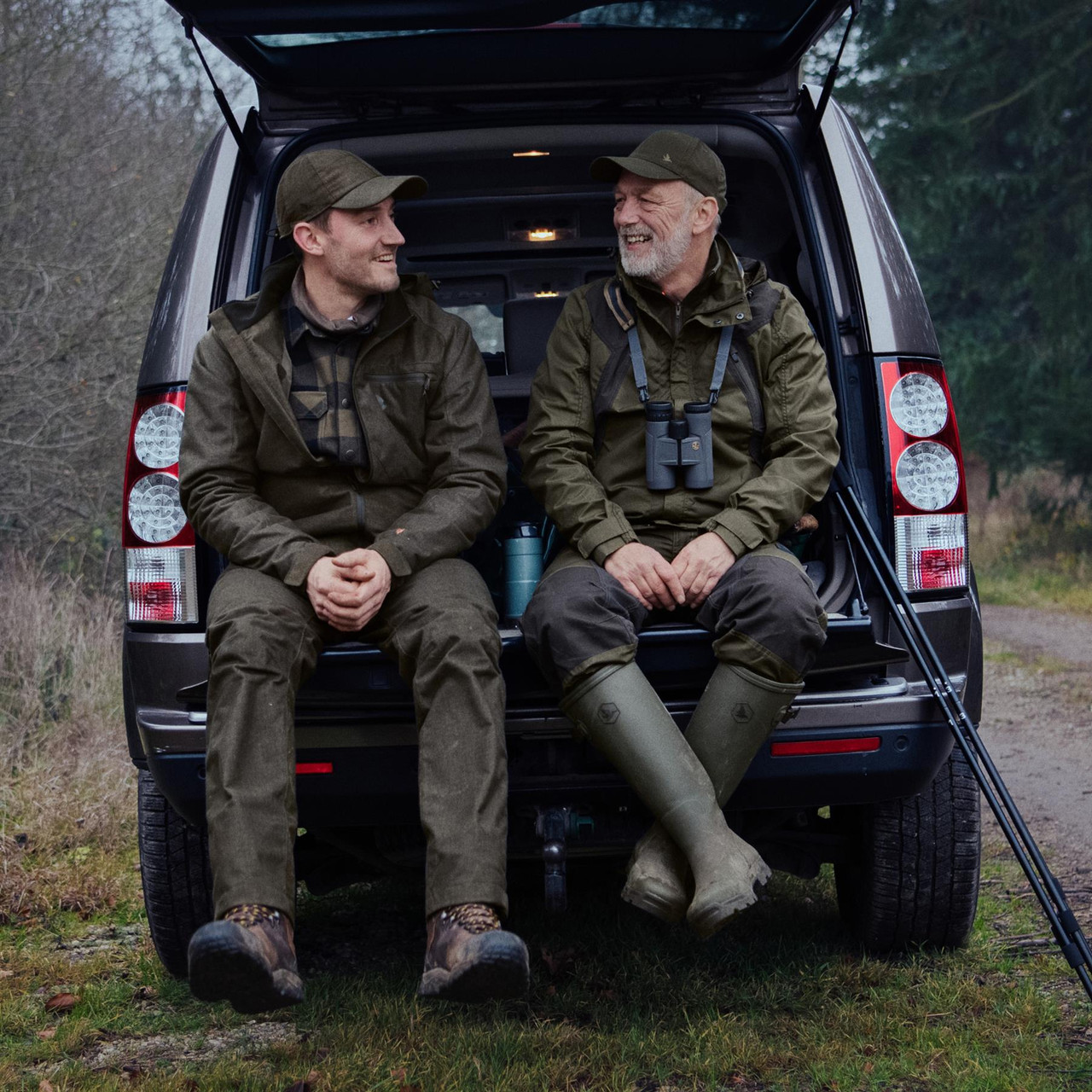
Conclusion
As someone who has shot for several decades, I have both shooting boots and wellies in my wardrobe. As a mainly driven game shooter, I generally opt for wellies but for stalking, and on days when I know I’m likely to walk greater distances, then I’ll generally opt for a lace up shooting boot.
Ultimately, the choice comes down to personal preference and I would recommend going with the type of footwear that you know you will find both most comfortable and also most suitable to perform on the terrain you will be covering.

Posted by John
John is one of the Managing Partners at Philip Morris & Son, overseeing the day-to-day running of the business alongside his brother, Bruce. He is meticulous in ensuring that the store continues to offer exceptional service and high-quality products, maintaining the reputation that has been built up over the last 175 years. For many years, he has focused his efforts on the store's range of country clothing and footwear brands, developing an almost unrivalled knowledge of the country lifestyle and shooting clothing markets. As a third-generation family member at Philip Morris & Son, it’s no surprise that John is passionate about independent businesses and their role in the wider community. He currently invests time as President of the British Independent Retail Association (Bira) and has also previously served as Chairman of Hereford Business Improvement District (HBID) and Vice Chairman of Hereford Business Board.
Away from work, John lives with his wife and two children and is unashamed to admit having a favourite family member: Kylo, the cockapoo. John is a keen shooter and general country sports enthusiast. Having been brought up on a farm in rural Herefordshire, with cows and ponies, the countryside is very much a part of his DNA. He’s also passionate about rugby, helping coach his son’s team, and is an avid runner who has, to date, completed three marathons.


